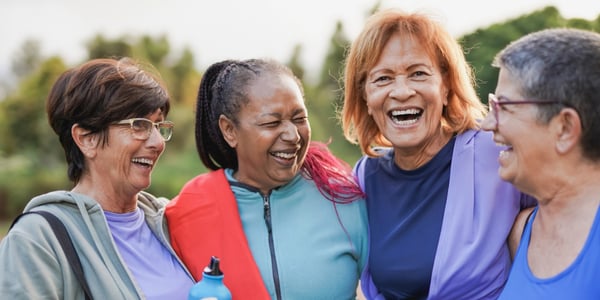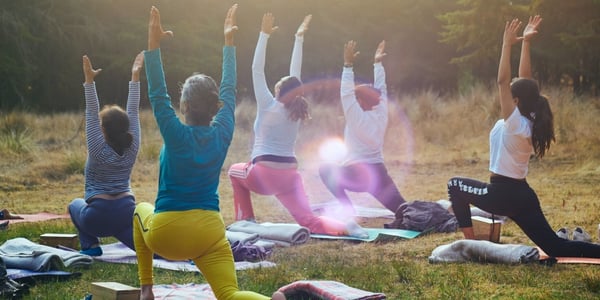Maintaining good coordination and sharp reflexes is essential for enhancing quality of life and...
10 Benefits of Dancing for Older Adults
Exercise and social engagement are commonly emphasized as methods for maintaining or improving physical, mental, and emotional well-being, and dancing is one activity that combines both. Dancing isn’t just for the young or the trained; people of all ages and skill levels can enjoy it. In this blog, we’ll explore ten significant benefits of dancing for older adults, highlighting why it should be a regular part of your lifestyle.
1. Improved Cardiovascular Health
One of the most immediate benefits of dancing is its positive impact on cardiovascular health. Dancing is an aerobic exercise, meaning it gets your heart pumping and increases blood circulation. For older adults, this is particularly important as it helps to lower the risk of heart disease, hypertension, and stroke. Whether a slow waltz or a fast-paced salsa, dancing strengthens the heart muscle, improves lung capacity, and enhances cardiovascular endurance.
2. Enhanced Balance and Coordination
Falls are a leading cause of injury among older adults, often leading to a decline in independence. Dancing is an excellent way to improve balance and coordination, reducing the risk of falls. Your body becomes more adept at maintaining stability as you practice movements such as shifting weight from one foot to the other. Additionally, dancing challenges your coordination by requiring you to move different parts of your body simultaneously, which can lead to improved motor skills over time.
3. Strengthened Muscles and Bones
Muscle mass and bone density naturally decline as we age, leading to conditions like sarcopenia and osteoporosis. Dancing is a weight-bearing exercise that forces your body to work against gravity. This type of exercise is crucial for maintaining and even building muscle mass and bone density. Strengthened muscles support joint health, improve posture, and increase overall mobility. Dancing also promotes joint flexibility, which can help reduce the stiffness that often accompanies aging.
4. Mental Sharpness and Cognitive Function
Dancing is not just a physical activity; it’s a mental workout, too. Learning and remembering dance steps, following rhythm, and coordinating movements with music stimulate various parts of the brain. Research has shown that dancing can improve cognitive function, delay the onset of dementia, and even reverse brain aging. Engaging in activities that challenge the brain is crucial for maintaining mental sharpness and reducing the risk of cognitive decline. Dancing also requires quick decision-making, which enhances brain agility.
5. Emotional Well-Being and Stress Relief
The emotional benefits of dancing are profound. Combining physical activity, music, and social interaction creates a sense of joy and fulfillment. Dancing releases endorphins, the body’s natural feel-good chemicals, which can help alleviate symptoms of depression and anxiety. The rhythmic nature of dancing also encourages relaxation and reduces stress levels. For those experiencing loneliness or isolation, dancing helps them connect with others, lifts their moods, and enhances overall emotional well-being.
6. Social Connection and Community Building
Social interaction is a critical component of healthy aging. Participating in dance classes or group dancing events allows you to meet new people, build friendships, and become part of a community. These social connections can reduce feelings of loneliness and provide a sense of belonging. Whether it’s ballroom dancing, line dancing, or Zumba, the shared experience of dancing facilitates a supportive environment where people can connect over a common interest. These connections can lead to lasting friendships and a stronger social network.
7. Weight Management and Improved Metabolism
Maintaining a healthy weight becomes more challenging as we age due to a slower metabolism and decreased physical activity. Dancing is an effective way to burn calories and boost metabolism. Dancing can burn anywhere from 200 to 400 calories per hour, depending on the intensity and duration. Regular dancing helps maintain a healthy weight, reduces the risk of obesity-related diseases, and improves overall metabolic health. Dancing offers a fun and engaging alternative for anyone looking to manage their weight without the repetitiveness of traditional exercise.
8. Increased Flexibility and Range of Motion
Flexibility tends to decrease with age, leading to stiffness and reduced mobility. Dancing involves a wide range of movements that stretch and lengthen the muscles, improving flexibility and range of motion. This increased flexibility can alleviate joint pain, improve posture, and enhance overall physical function. Maintaining flexibility can help you perform daily activities and reduce the risk of injury. Regularly dancing keeps the body limber and agile, making it easier to move freely and comfortably.
9. Boosted Confidence and Self-Esteem
Dancing is a powerful way to boost confidence and self-esteem. Mastering new dance moves, performing in front of others, or simply enjoying the rhythm can create a sense of accomplishment and pride. This boost in confidence can extend beyond the dance floor, influencing other areas of life. Whether taking on new challenges, engaging in social activities, or pursuing hobbies, the confidence gained from dancing can inspire older adults to live more fully and embrace new experiences with enthusiasm.
10. A Fun and Enjoyable Way to Stay Active
Perhaps the most compelling benefit of dancing is that it’s simply fun. Unlike traditional forms of exercise, dancing doesn’t feel like a chore. The joy of moving to music, expressing oneself through dance, and sharing the experience with others makes it an enjoyable way to stay active. Finding a beneficial and enjoyable activity is key to maintaining a consistent exercise routine. Dancing offers a way to stay fit, healthy, and engaged without the monotony of repetitive exercises.
Choosing the Right Style of Dance
There are many different styles of dance, each offering unique benefits. Choose a style that suits your physical abilities, interests, and goals. Here are a few popular dance styles that are particularly well-suited for older adults:
Ballroom Dancing
Ballroom dancing includes styles like the waltz, tango, and foxtrot. These dance styles emphasize grace, balance, and coordination, making them excellent choices for improving posture and joint flexibility.
Line Dancing
Line dancing is a form of group dance in which participants line up and perform a sequence of steps in unison. It’s great for cardiovascular health, balance, and social interaction.
Salsa and Latin Dancing
These fast-paced dances improve cardiovascular endurance, coordination, and rhythm. The lively music and energetic movements make salsa and Latin dancing both fun and invigorating.
Zumba
Zumba is a high-energy dance workout that combines Latin rhythms with aerobic exercise. It’s ideal for burning calories, improving cardiovascular health, and boosting mood.
Tap Dancing
Tap dancing involves rhythmic footwork that creates a unique sound. Tap dancing improves coordination, rhythm, and lower body strength.
Ballet
While traditionally associated with younger dancers, ballet offers gentle movements that can improve flexibility, balance, and core strength.
Folk Dancing
Folk dancing involves traditional dances from various cultures and is an amazing way to stay active, learn about different cultures, and connect with others.
Freestyle
Freestyle dancing is all about moving naturally to the music with no set steps. It’s a fun, flexible way to express yourself, and the best part is that it can be done anywhere with anyone!
Getting Started with Dancing
If you’re new to dancing, it’s important to start slowly and choose a style that matches your fitness level. Here are a few tips to help you get started:
Consult with Your Doctor
Before starting any new exercise program, it’s a good idea to check with your doctor, especially if you have any pre-existing health conditions.
Start with a Beginner’s Class
Look for beginner-friendly classes at local community centers, gyms, or dance studios. Many classes are specifically designed for older adults, focusing on gentle movements and low-impact exercises.
Wear the Right Footwear
Comfortable, supportive shoes prevent injury and ensure a good dancing experience. Depending on the style of dance, you may need specialized shoes.
Stay Hydrated
Dancing can be physically demanding, so drink plenty of water before, during, and after your dance session.
Listen to Your Body
Pay attention to how your body feels while dancing. If you experience pain or discomfort, take a break or modify the movements. It’s important to dance at your own pace.
Have Fun
Remember, dancing is about enjoyment. Don’t worry about perfection or comparing yourself to others. Focus on having fun and moving to the music.
Imagine an exercise that not only gets your heart pumping but also lifts your spirits, sharpens your mind, and strengthens social bonds—all while you’re having fun. That’s the magic of dancing! With its wide range of physical, mental, and emotional benefits, dancing offers a holistic approach to well-being that is both enjoyable and effective. If you’re looking to improve your cardiovascular health, boost your mood, or simply have fun, dancing is an activity that can enrich your life in countless ways. So, put on your favorite music, find a dance style that suits you, and let the rhythm move you toward a healthier, happier life.







